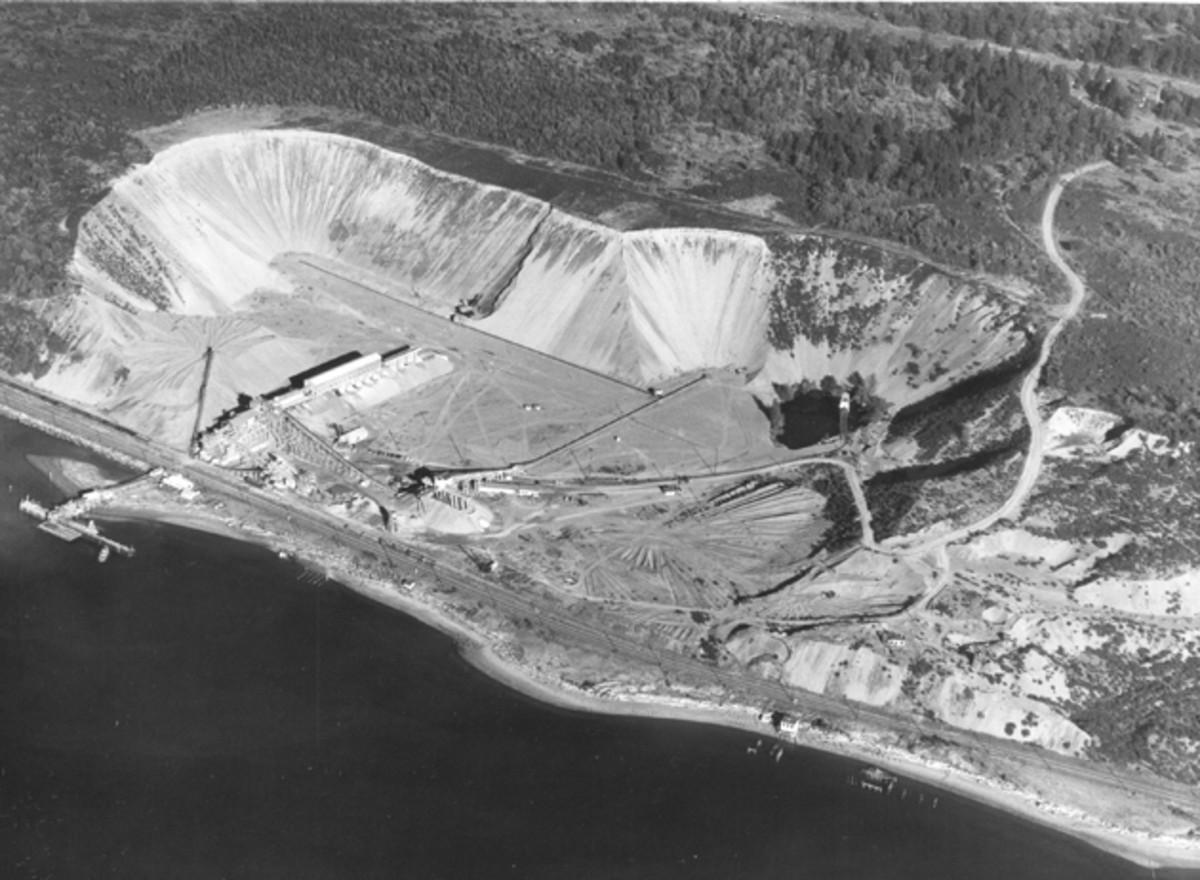USGA's Chambers Bay prep includes dramatic finish and plenty of firsts

UNIVERSITY PLACE, Wash. — Tweaks. Yeah, there were plenty of those made to Chambers Bay, which in six months will play host to the Pacific Northwest’s first-ever U.S. Open. But with the tweaks in place, the fescue growing and the between-the-ropes planning sewn up, getting Chambers Bay ready for the scrutiny that will come in June still requires intense daily attention.
The publicly owned course just outside of Tacoma, Wash., was built—on land that was once a completely drab gravel-mining pit—with the U.S. Open in mind, and, indeed, the tournament was awarded to Chambers Bay shortly after it opened in 2008. Now,even as the public demand to play far outpaces opportunity, the club remains focused on getting the course ready for the Open.
- MORE: SI.com sneaker hub: Everything Air Jordans, adidas and more
It is a task that, in a way, is proving unique in the 115 years of the tournament, as course superintendent Josh Lewis and USGA’s Northwest Director, Larry Gilhuly, are preparing the first-ever Scottish links-style course in U.S. Open history.
And that means 100 percent fine fescue, one tree—oh, the love the Lone Fir on hole 15 gets from the public—and plenty of creative shot making.
With six months to go until the Open, if the course isn’t primed, it is too late to get it there. Any major changes have been implemented and even the fairway lines are in. Now it is all about conditioning.
How the USGA built a stadium from scratch to host the 2015 US Open
“We hear it everywhere we go that the golf course doesn’t look like it is in U.S. Open shape,” Danny Sink, director of the 2015 Open, tells Edge. “It is impossible to keep it in shape 52 weeks a year.”
Call it a process. Plans have formed for how to reduce play, limit heavy traffic areas and still keep the course open. Before the course closes to the public the day after Memorial Day, the course itself will do the hard work. The fescue will grow and thicken, with a little help from the traffic it gets between now and June.
For the winter, Lewis says that keeping the greens—constructed from creeping red and chewings fescue—protected remains the key. Turf covers sit alongside all 18 greens for added insulation when needed. Tees are made from the same combination of fescues, while the fairway and rough is a mix of red and chewings, along with sheep and hard fescues, giving plenty of density.

He says that pre-winter he tried to get the rough as dense as possible and expects the fescue to come back this spring even thicker.
Those fairway lines and course contours will turn more defined as the fescue takes its spring shape. And because the course won’t be U.S. Open ready until weeks before the championship, don’t expect to see pros flocking to the site until May. But then, the practice may become fast and furious.
“Players are finicky,” Sink says. He tells the story of Winged Foot Golf Club in 2006 and how two weeks before the Open Phil Mickelson spent half a day on every green. He finished second that year. Expect to see players—with only about five likely ever having played the course prior to this year—respond similarly come late spring.

Lewis, at 31 the second-youngest course superintendent to host a U.S. Open, tells Edge the rebuilds and major tweaks are in. Here’s a look at what Lewis and Gilhuly tell Edge are the key changes for Chambers Bay:
- In a first for the U.S. Open, holes 1 and 18 will alternate between being a par-4 and a par-5 each day, keeping the overall par at 70. In that vein, a new first tee box was created in the hillside, allowing the par-5 to run up to 610 yards.
- Other new tees were built to encourage creativity. On the 9th, a new tee in a completely different location allowed the USGA to offer the hole at 227 yards down a hill or 221 up a hill. That’s a completely different look for the same hole. “It is like having a 19th hole,” Lewis says. “That is what is nice about the site, there is so much flexibility in how it can be set up. Having those options is a game changer.”
- Holes 1, 7 and 13 all have rebuilt greens. Problems on 1 and 7 during the 2010 U.S. Amateur exposed issues with balls rolling off the green in significant ways.
- A “massive bunker redesign” on hole 5 created a narrower landing area.
- An additional 30 feet of tee box stretching toward the water and railroad tracks on 16 creates a completely new tee shot.
- A new tee on 3 adds yardage and complexity.
- An extra tee on 15 adds 100 yards of play.
- Hole 13 is 105 yards wide, the widest of any in U.S. Open history. With the tilt of the hole, this is “going to be an awesome hole to watch,” Lewis says.
- Hole 14 received new championship tees.
- A variety of off-play mounds were removed for spectator movement.
- Gilhuly has identified at least three areas on the fescue-topped ridges where the players will walk above the crowds to get from hole to hole. In each situation, catwalk bridges will get built to move players over the top of the crowds.
- But of all the changes, the most spectacular will be the pot bunker added to 18.
Designing the ultimate pro athlete recovery center — in the air
It was already a spectacular finishing hole, with the fairway running away from the water alongside large mining relics into a green cut into a stadium bowl, but Gilhuly and Lewis wanted even more drama.
So they dug for it.
They were finding that while there was a narrow gap to drive the ball into, there wasn’t much in the way of danger. “We changed an easy finish into one with teeth,” Gilhuly says.
The brand-new Chambers Pot bunker is “brutal.” Located in the heart of the landing area, the 10-foot-deep bunker is so steep that it has stairs going down into it. When fairways get fast, you’ll see balls trickle into this thing. And you don’t want to be in the pot at Chambers Bay. You’ll either hit a hero shot or have to mine your way out.
Tim Newcomb covers stadiums, design and gear for Sports Illustrated. Follow him on Twitter at @tdnewcomb.
